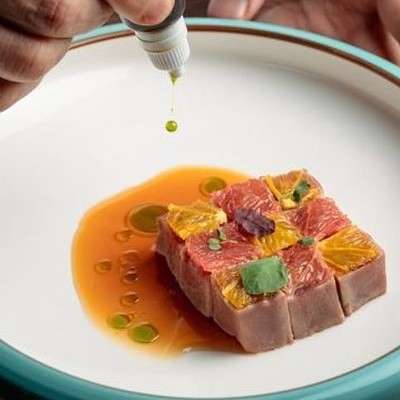Manti is one of the few Turkish dishes that Americans might be familiar with that didn't come from the Mediterranean. Foods like hummus, baba ganoush and dolmades all have roots in the Levant and its bordering countries. Not manti.
The clever little dumplings -- which Istabnbul (5613 Morningside) has listed on its menu as "Turkish ravioli" -- traveled much farther than the shores of the Mediterranean Sea. Manti (singular: mantu) were brought to the crossroads of Europe, Asia and the Middle East by Central Asian tribes during the Mongolian Empire.
The manti at Istanbul are filled with a gently spiced filling of ground lamb, which is tangy enough on its own, but it's also topped with housemade yogurt that has a tart, almost citrusy kick to it. A drizzle of olive oil and a sprinkle of mint smoothes the dish out in the oddest yet tastiest way. But not all manti have lamb in them, though, and not every dish is topped with yogurt.
In Kazakhstan, where manti is a popular street food, the little dumplings are filled with horse meat (as well as beef and/or lamb, depending on what's available). The dumplings are much larger than the delicate, bite-size pieces you'll encounter in Turkish cuisine and are cooked in a manner very similar to Chinese dumplings. This reflects the Asian influence that took the dumplings on a journey from east to west, the dumplings themselves getting smaller and smaller along the way.
The main reason that manti get smaller as you get father west has to do with the manner in which they were originally transported. What started out as a typical steamed dumpling in what is now China gradually morphed over time into a smaller, more easily carried foodstuff. Mongols and other migrating tribes began shrinking the dumplings to either freeze or dry them out, which allowed them to take the nutritious food along with them. They would then reheat the dumplings in the 15th century version of a microwave: in a boiling pot of water over a campfire.
In Armenia, it's common to see both sizes of manti -- the little gems as well as the big potstickers -- while in Afghanistan, tomato sauce is added to the top of the dumplings along with yogurt. It's even becoming popular in Germany, as Turkish immigrants bring the dish to their new homes. The variations on the dish are nearly endless, but it's the Turkish version I like best.
You can try it for yourself on Sundays, which is the only day of the week that Istanbul serves up the traditional favorite. It's nearly large enough to split with two, especially if you order a multi-hued meze platter alongside the manti and finish with a strong, dark cup of Turkish coffee, just for good measure.





